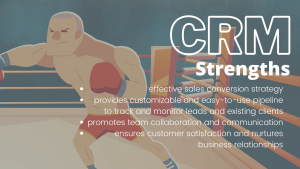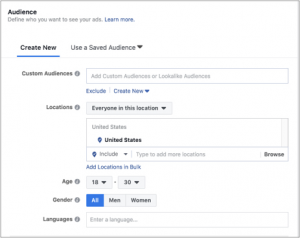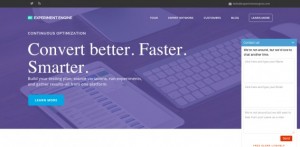 Doc Searls is the co-author of the best-selling book The Cluetrain Manifesto and the author of The Intention Economy: When Customers Take Charge. He is the Director of Project VRM at Harvard’s Berkman Center for Internet and Society, Senior Editor of Linux Journal and the President of The Searls Group, his consulting practice. In 2007, he was named one of the 100 Most Influential People of IT by eWeek and in 2005 he received the Google O’Reilly Open Source Award for Best Communicator. UnboundID recently intereviewed him about the importance of giving customers control over their personal data.
Doc Searls is the co-author of the best-selling book The Cluetrain Manifesto and the author of The Intention Economy: When Customers Take Charge. He is the Director of Project VRM at Harvard’s Berkman Center for Internet and Society, Senior Editor of Linux Journal and the President of The Searls Group, his consulting practice. In 2007, he was named one of the 100 Most Influential People of IT by eWeek and in 2005 he received the Google O’Reilly Open Source Award for Best Communicator. UnboundID recently intereviewed him about the importance of giving customers control over their personal data.UnboundID: How are customer privacy concerns changing business and IT practices?
Searls: On the one hand, it should be clear to every business that people are concerned about privacy. Pew says 91% agree that consumers have lost control over how personal information is collected and used. TRUSTe says 92% in the U.S. worry about their privacy online. It should also be clear that a growing number of people are doing something about it. AdBlock Plus is the most popular browser extension for Firefox. In August 2014, Pagefair reported a 27.6% ad blocking rate. Among Millennials, the rate was 41%.
 But these economic signals are mostly ignored. Today it is taken for granted by online marketing — advertising especially — that following people around, through browser cookies and other means, is a necessity. Fixing this isn’t easy. There are advertising systems that do their best to respect individual users. But surveillance of people in their private spaces, such as browsers and email clients, is still wrong. That little obvious harm is done or reported does not make it right. I expect, as power increases for individuals on the ‘Net, liberties with personal privacy taken by businesses will decrease. But it will also take a while. The flywheels of business-as-usual are huge and spinning away.
But these economic signals are mostly ignored. Today it is taken for granted by online marketing — advertising especially — that following people around, through browser cookies and other means, is a necessity. Fixing this isn’t easy. There are advertising systems that do their best to respect individual users. But surveillance of people in their private spaces, such as browsers and email clients, is still wrong. That little obvious harm is done or reported does not make it right. I expect, as power increases for individuals on the ‘Net, liberties with personal privacy taken by businesses will decrease. But it will also take a while. The flywheels of business-as-usual are huge and spinning away.
UnboundID: How can companies do a better job in gaining and keeping the trust of customers in the digital world?
Searls: The simplest thing is to make clear that personal information is not being collected, or that — if it is — it will be not be sold to others and will be made available to the people from which it has been collected. Too much of marketing, and “big data” collection, is a three-dimensional shell game. People don’t know what’s going on. This is why “transparency” is becoming a hot buzzword. But there is still little of it, so far.
UnboundID: How can a company be more transparent with its customers then, and what else should they be doing to be the most responsible stewards of customer data?
Searls: Simply put, they should make it easy for customers to know what’s done with the data, and to get the data back — in a standard format.
UnboundID: What are the most important benefits customers can gain today by sharing their data?
Searls: I’m not crazy about the “sharing data” framing, because it tends to start with the assumption that sharing data is okay to begin with. I’d rather start by saying no, personal data is personal until the person voluntarily puts it to use in ways it can be known by others, by permission — for example, when filling out a form. That’s not sharing data. It’s using it for a purpose. For example, consider the data used to fill out forms, or to broadcast a request for a quote on an intended purchase. We call the latter “intentcasting.”
But even with intentcasting there needs to be a means by which the customer remains in control, for example by staying anonymous until she feels comfortable revealing her name and knowing how her personal information will be used. This, by the way, is how business is done in the physical world. Privacy is not controversial there, because we have technologies to protect what’s personal. For example, clothing. Online, however, naked is the default state. This needs to be fixed, but while it isn’t, marketers feel free to gather all kinds of personal information that people in the physical world would never allow.This video does a good job of making the difference clear.
There is progress on both fronts. For example, Personal.com has a product called FillIt, which makes it easy to use and re-use personal data to fill out many different kinds of forms. It’s a good example of relieving a common and familiar source of pain online. There are also about two dozen intentcasting projects listed among VRM developers.
Customers are requesting more control over how their data is used, and many businesses are responding by making preference management part of their customer experience strategy. Read more about implementing identity management capabilities that enable companies to honor customer preferences. Consumer Preference & Privacy Management: Gaining a Competitive Edge by Empowering Your Customers.
This article was originally published on the UnboundID Blog.
(256)
Report Post








